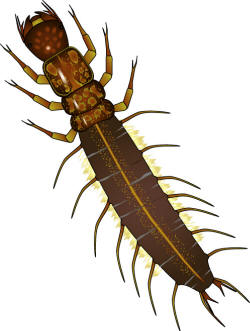Structural and functional responses of a benthic macroinvertebrate assemblage to pulses of the insecticide imidacloprid were assessed in outdoor stream mesocosms. Imidacloprid pulses reduced invertebrate abundance and community diversity in imidacloprid-dosed streams compared to control streams. These results correlated well with effects of imidacloprid on leaf litter decomposition and feeding rates of Pteronarcys comstocki, a stonefly, in artificial streams. Reductions in oxygen consumption of stoneflies exposed to imidacloprid were also observed in laboratory experiments. Our findings suggest that leaf litter degradation and single species responses can be sensitive ecotoxicological endpoints that can be used as early warning indicators and biomonitoring tools for pesticide contamination. The data generated illustrates the value of mesocosm experiments in environmental assessment and how the consideration of functional and structural endpoints of natural communities together with in situ single species bioassays can improve the evaluation and prediction of pesticide effects on stream ecosystems.
Benthic invertebrate communities are often used as indicators of aquatic ecosystem health because many species are sensitive to pollution and sudden changes in their environment. Community characteristics—such as abundance, richness, diversity, evenness, and community composition—can be monitored to determine whether the community is changing over time due to natural or human-caused impacts.
The orders Ephemoptera (mayflies), Plectoptera (stoneflies), and Trichoptera (caddisflies) are pollution sensitive taxa. The EPT index is the proportion of the benthic invertebrate community belonging to these taxa. Chironomids are generally considered to be pollution-tolerant; therefore, determining the ratio of chironomids to EPT species can be a good indicator of pollution levels.
Sources:
J.L.T. Pestana et al. (2009) Environmental Pollution157: 2328–2334
http://www.sciencedirect.com/science/article/pii/S0269749109001663
RAMP (Regional Aquatics Monitoring Program) Alberta
http://www.ramp-alberta.org/river/ecology/life/invertebrates/using+bent…

- Login om te reageren
